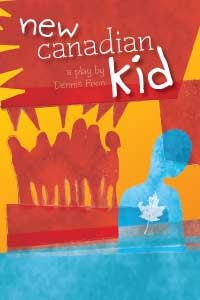By Reem Ghaleb
As the classic tale of a newcomer trying to fit in, New Canadian Kid approaches the concept of immigration by allowing the audience to see life through the eyes of recent immigrants. One of the most produced Canadian plays, New Canadian Kid is playing at Storybook Theatre from Sept. 20 to Oct. 5.
The play follows Nick, a young boy who immigrated to Canada from the fictional nation of Homeland, as he struggles to fit into a new culture and learn a new language. The play delves into some common themes of racism, tolerance, homesickness, bullying and acceptance. The story centres around Nick and two of his classmates: his new friend Mencha and the bully Mug. Nick’s mother represents the difficulties faced by adults in a new country, such as struggling with unemployment and feeling inadequate due to a language barrier.
On stage, Nick and his mother speak English but all the Canadians speak gibberish, giving the audience an opportunity to experience events through an immigrant’s perspective. The gibberish language is highly developed using words from other languages. It is understandable to an extent so that the audience can still understand other characters’ frustrations. The effect is lost however when some characters over act — as though forcing the audience to understand when they’re really not meant to. Although comical to watch, the play seems unrealistic because most people don’t behave in that manner while trying to communicate.
There was potential for Mug’s character to add more depth to the play if they had developed him more and explored the reasons he became a bully. At some points, there are hints at underlying motives but they are never followed through. Mug remains an archetype character that is unnecessarily mean just to further the plot and who magically reforms at the end.
The set and costumes were composed of bright colours and sharp lines that attract the audience’s attention without overshadowing the actors. The chairs and tables look more like Tetris blocks rather than something someone would willingly sit on but they do a good job of showing how common furniture in one culture may look bizarre to others.
The play lacks a real resolution. While some may claim that it ends abruptly, the open ending was more realistic than a happy ending. Adapting to a new environment is a long process and has lasting effects that cannot be completely resolved within a one-act play. Overall, was a rather predictable feel-good play that tried to address some heavy topics in a light manner and is relatable to almost anyone who has ever felt like the new kid.

